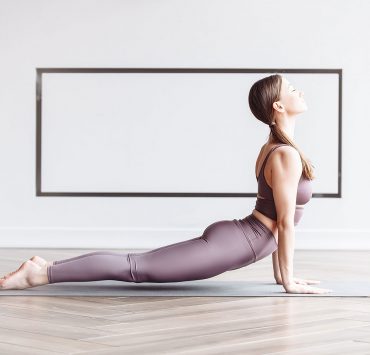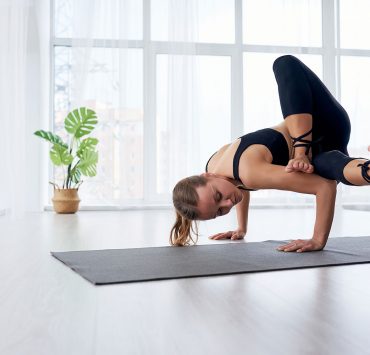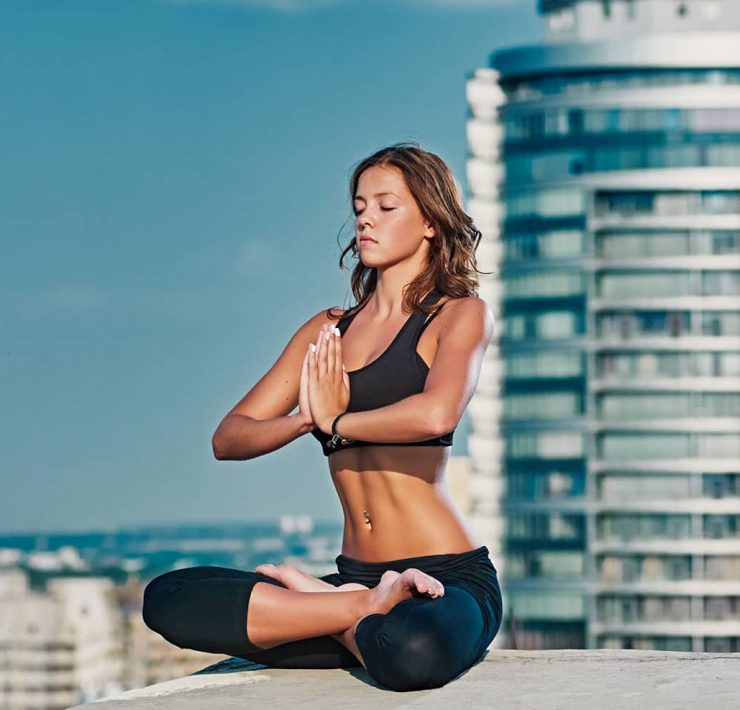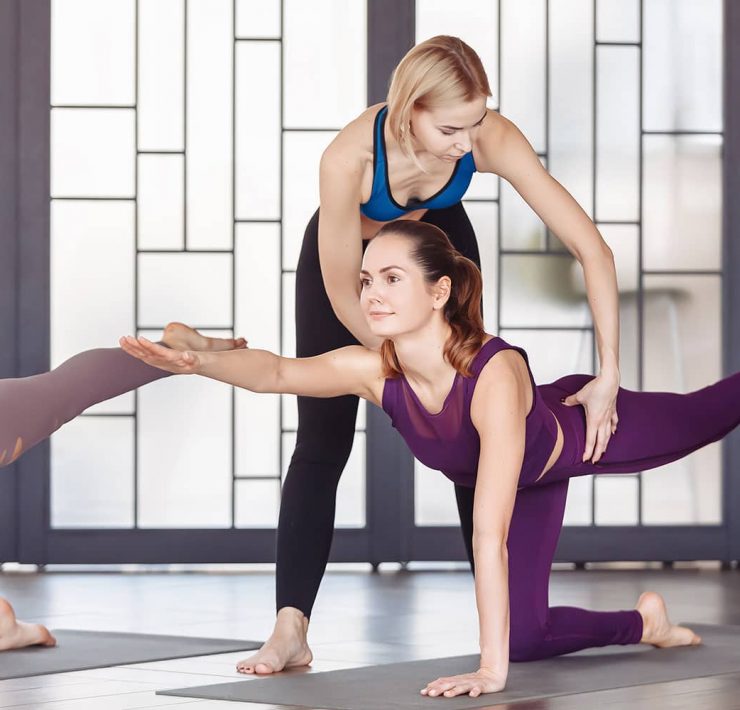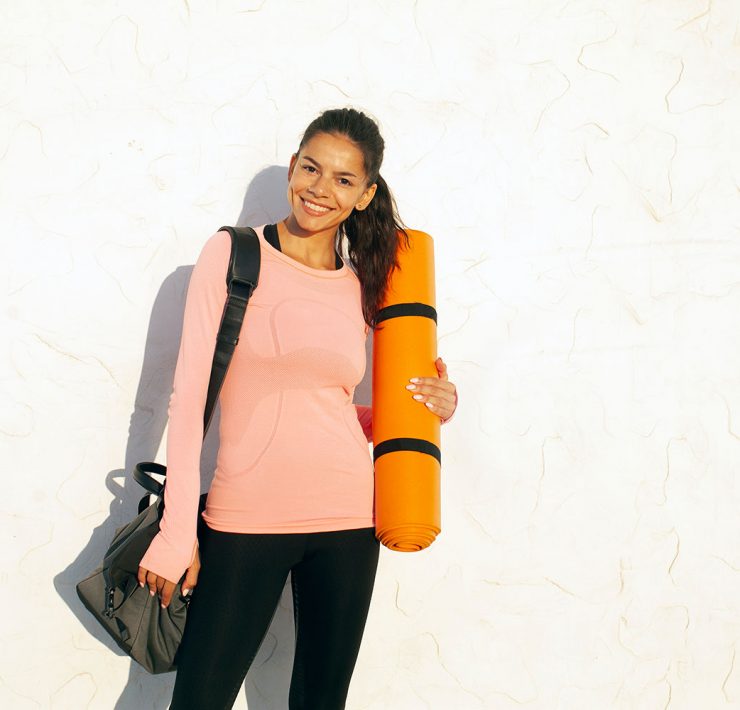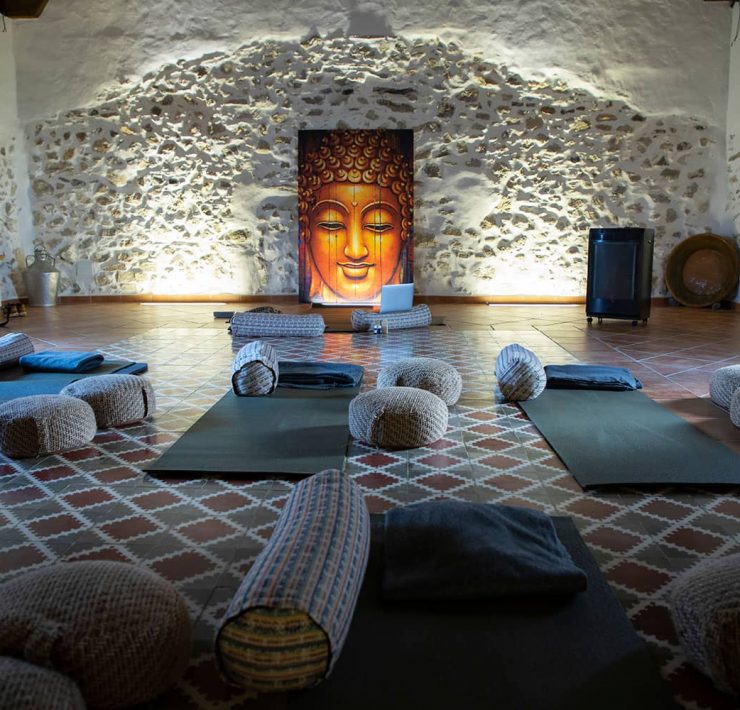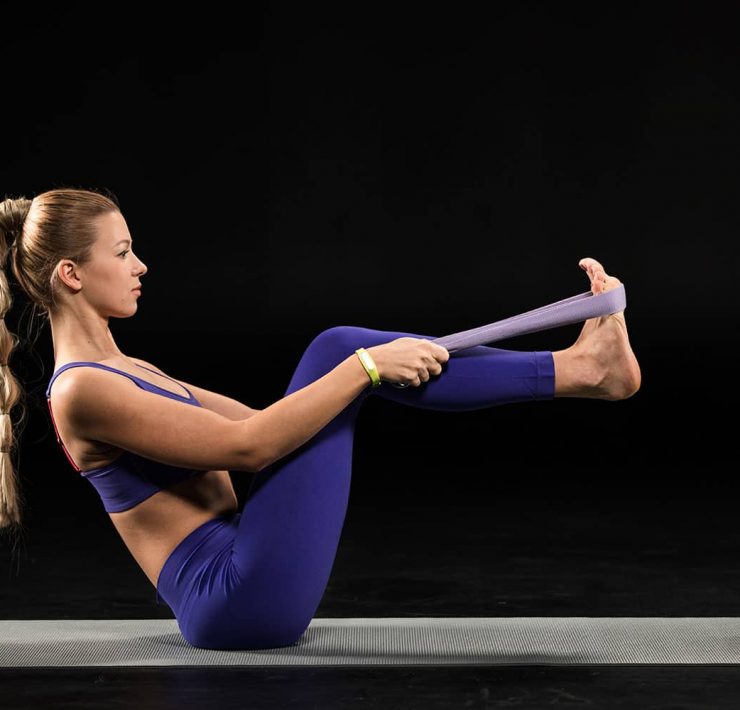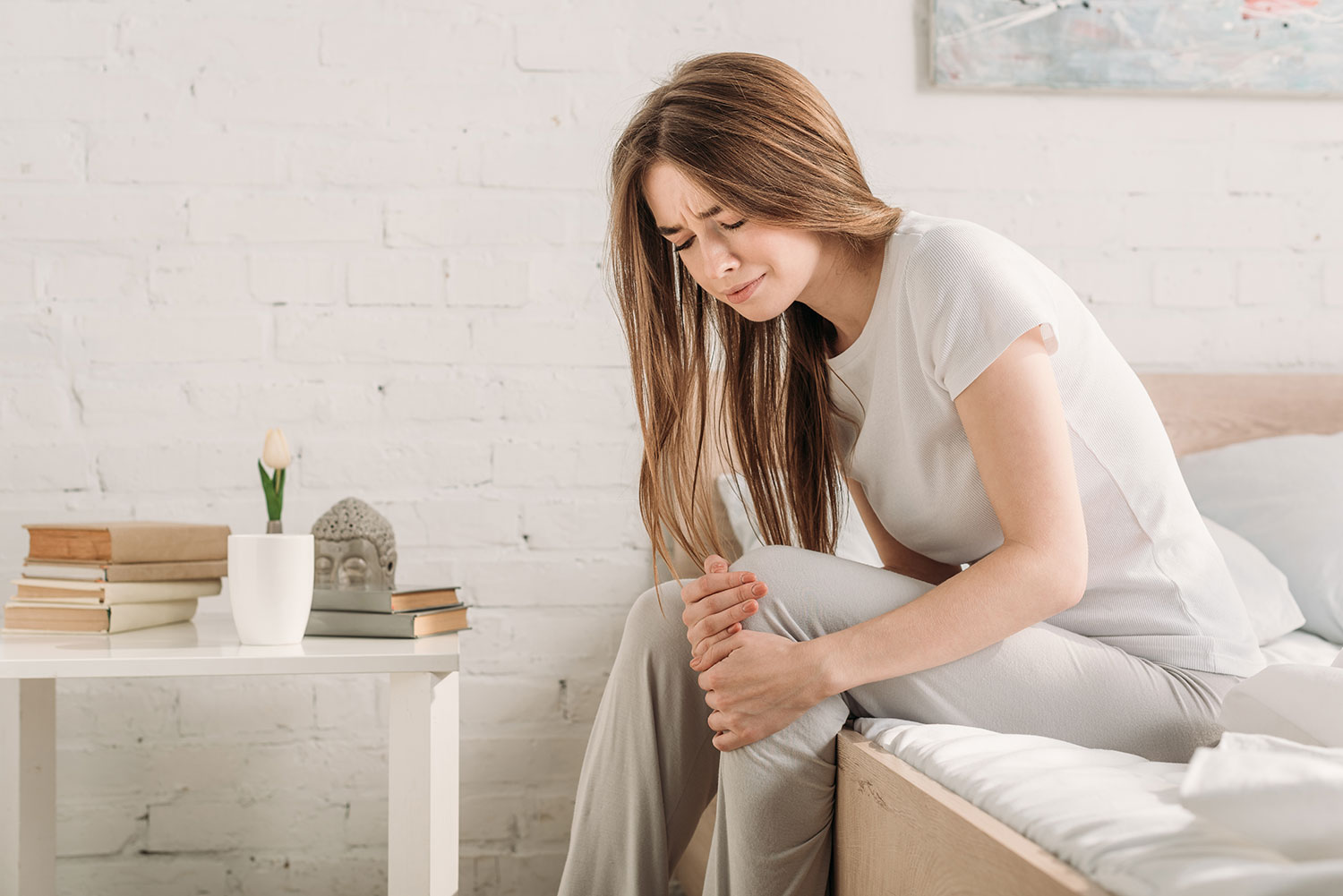
Hannah is a former email marketing manager and long-time yoga…
Having knee pain can be… well a pain.
It can hinder basic mobility. It affects your ability to stand or stop you from participating in your favorite sports.
We can all probably name a professional athlete who retired or missed a season due to knee injuries.
Common knee problems are sprained or strained muscles or ligaments. Other issues are torn cartilage, tendonitis, and arthritis.
Before getting into the 10 yoga poses to relieve knee pain, let’s discuss what knee pain can look like. We will also cover the anatomy of the knee and the practice of foam rolling.
Symptoms
Knee pain can show itself in many ways. A few examples are:
- Swelling
- Stiffness
- Redness
- Warmth to the touch
- Weakness or instability
- Popping or crunching noises
- Limited mobility
Before engaging in any physical activity consult a medical professional for approval. Especially if you’re already experiencing knee pain.
Anatomy of the Knee
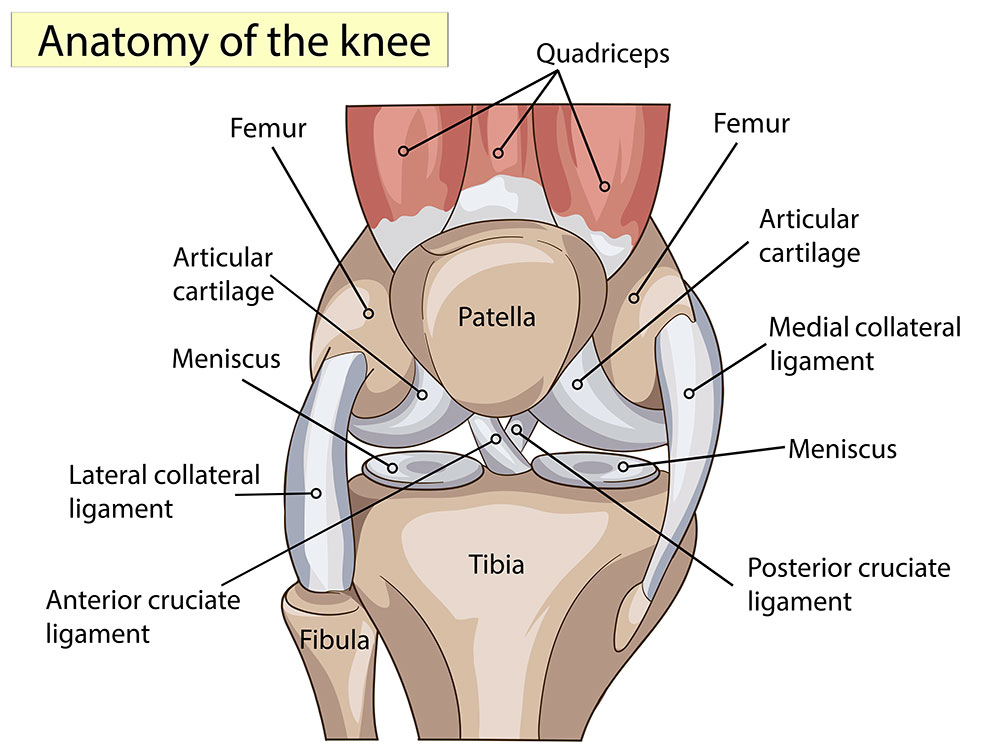
Structurally, there are 4 bones of the knee.
First is your femur, also known as the thigh bone. It connects your hip to your knee. Your tibia and fibula make up the bones of the shin, connecting the knee to the ankle. Lastly, there is a floating bone called your patella, which is your kneecap.
These bones are covered by muscles.
There are 2 main muscle groups of the knee. They are your quadriceps and your hamstrings. The quadriceps muscles are your knee extenders. Your hamstrings are your knee flexors.
Naturally, the other muscles of the legs are also involved. Your hip adductors are your inner thighs and your abductors are your outer thighs. These plus your calves all assist in the movement of the knee. The knee can flex, extended, and rotate.
Issues with any of these muscles can cause pain in the knee.
Foam Rolling
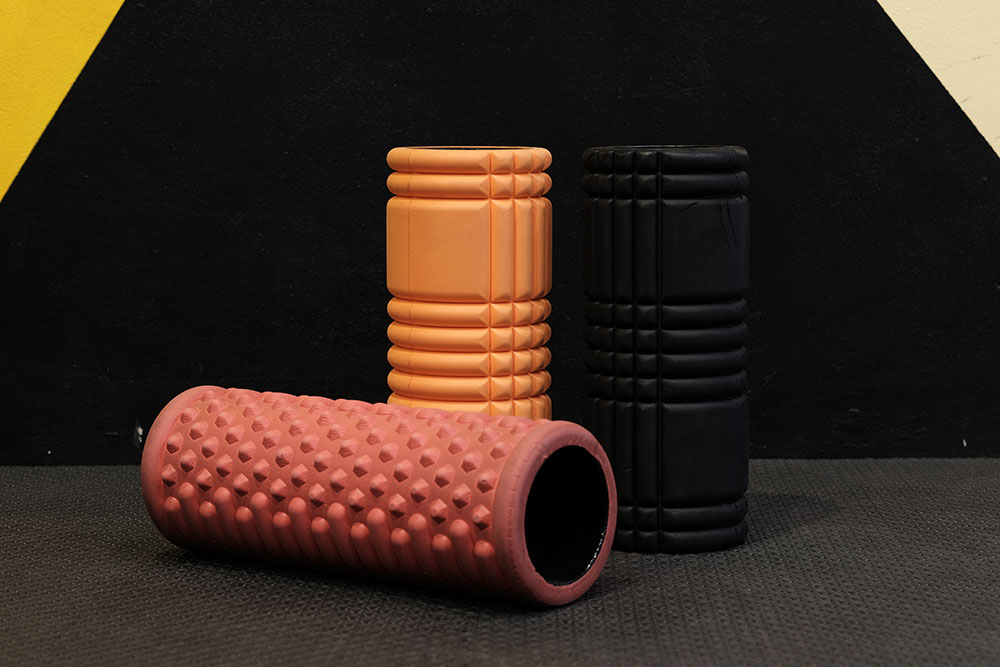
With the knowledge of the anatomy of the knee, you can foam roll the affected muscles. Compliment the following yoga poses with this practice.
Foam rolling, also called self-myofascial release (SMR), does more than just relieve pain. There are many other health benefits! It can increase your range of motion and help you relax.
To practice SMR, first, choose the muscle you want to target. Use your body weight to press the muscle down into the foam roller.
Slowly move the foam roller over the muscle. If you find a tender spot, hold for at least 30 seconds or until it releases.
Try rolling your hamstrings, quads, calves, or IT bands!
Yoga Poses
Below are 10 yoga poses that can help relieve knee pain by strengthening and stretching. Each pose also has bonus benefits listed below.
While props are not required, you may want to have 2 yoga blocks, a yoga blanket, and a strap on hand. Note that the final two poses are performed against an empty wall.
Tadasana – Mountain Pose
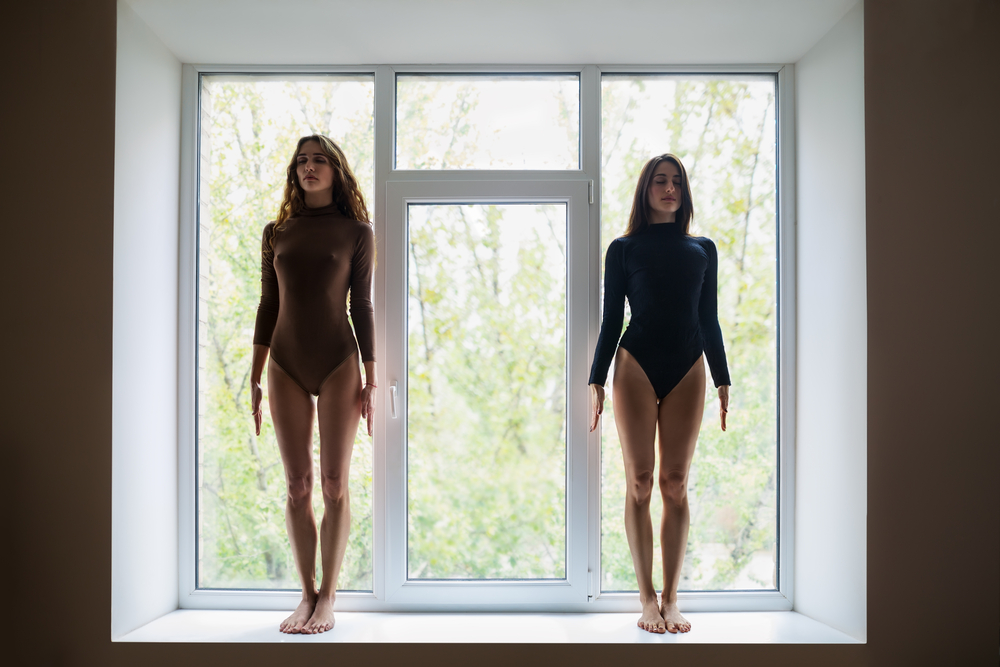
Mountain pose stretches your thighs, knees, and ankles.
Tadasana is so much more than simply standing, follow the alignment cues below to get the most out of this pose.
To practice, stand with your feet hip-width distance apart. Lift your toes, spread, and set them back down.
Your weight should be evenly distributed throughout both feet. Engage your calves, quadriceps muscles, and internally rotate your inner thighs.
Tuck your tailbone as you engage your glutes and abdominal muscles.
Check to ensure your shoulders are stacked over your hips as you pull them back and down. Lift your chin parallel with the floor.
Mentally scan your body for the alignment checkpoints.
Hold for 10 breaths.
Tadasana teaches proper alignment, firms the abdomen, and glutes. It also brings awareness to the muscles of the knee.
Sukhasana – Easy Seat Pose
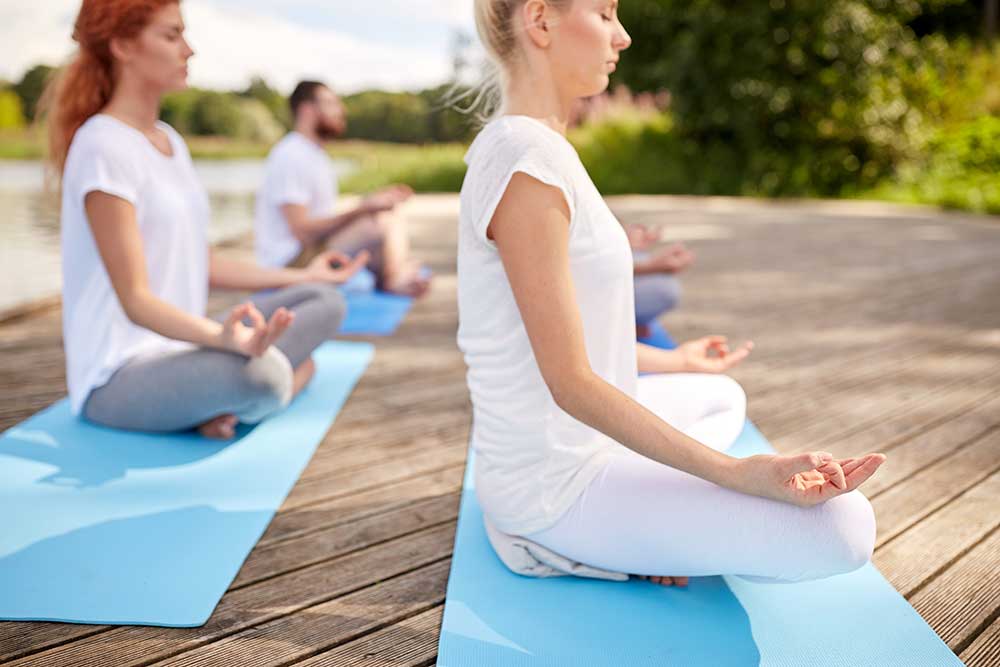
This basic pose strengthens your back while stretching your knees and ankles.
Have a seat on your mat. Cross both legs at the shins. Sit with a straight spine, stacking your shoulders over your hips.
Option to sit on a block or blanket(s) to get your hips over your ankles. This can be particularly helpful if there is tension in your knees. It’s also great if you plan on staying in this position for extended periods. It’s a popular pose for meditation.
Hold for 10 breaths. Release and switch your legs so the opposite shin in on top.
There are extra benefits to practicing the easy seat pose. It can strengthen your spinal muscles. It also opens your hips into external rotation.
Virasana – Hero Pose
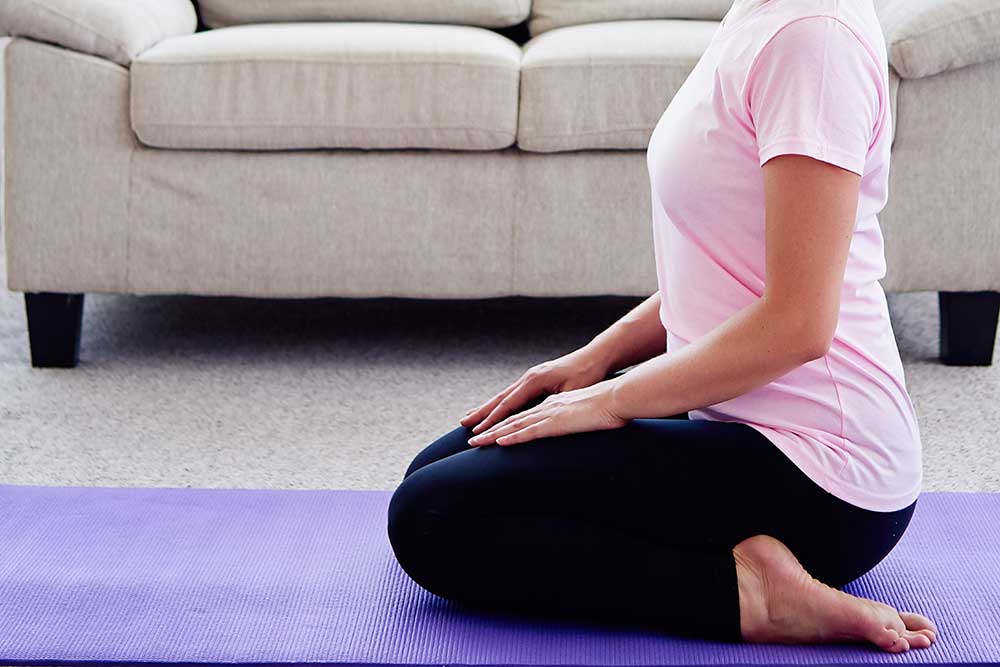
Hero pose strengthens the arches of your feet. It also stretches your quadriceps, knees, and ankles.
Start in a kneeling position on your shins. Keep your knees hip-width distance apart and your feet wider than your hips.
Option to place a yoga block on it’s the lowest height between your ankles.
Sit back between your heels or on the yoga block.
Hold for 10 breaths.
Virasana can improve digestion. This pose can also be therapeutic for high blood pressure and asthma.
Balasana – Child’s Pose
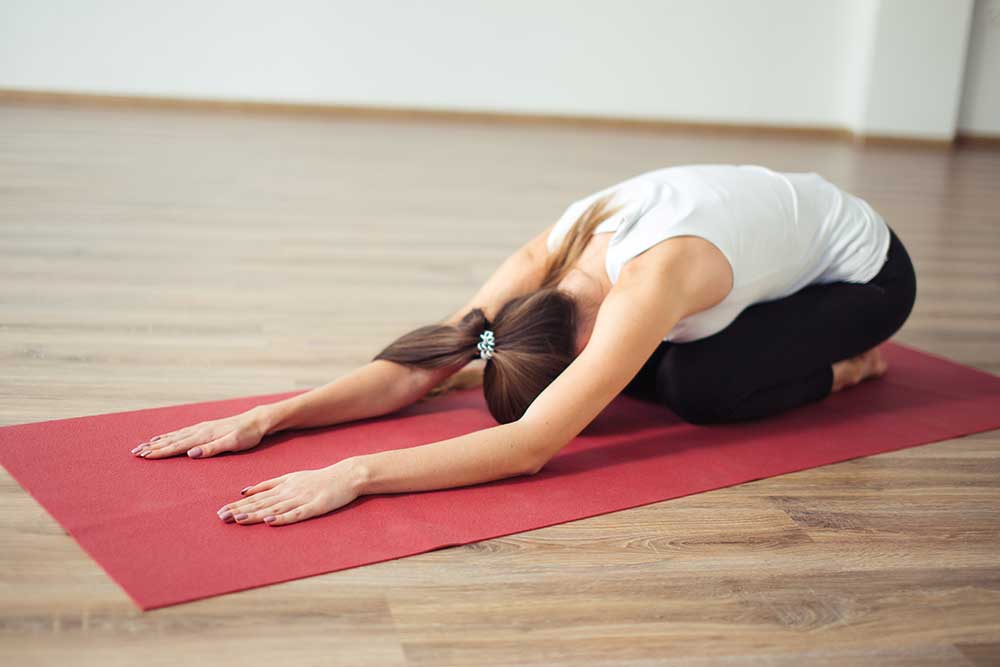
Child’s Pose stretches the hips, ankles, and quadriceps muscles.
Start in a tabletop position with your wrists directly under your shoulders. Keep your knees stacked under your hips.
Option to place a yoga blanket under your knees for a cushion.
Press the ground away with your hands as you bring your big toes to touch and open your knees to the width of the mat.
Send your hips back to rest on your heels. Walk your hands forward bringing your forehead to a yoga block or the ground.
You can roll a second blanket and place it between your calves and hamstrings. This is to mimic foam rolling and release tension in either of those muscles.
Hold for at least 10 breaths, longer as needed.
Balasana can calm the brain and help relieve stress and fatigue.
Upavistha Konasana – Wide-Angle Seated Straddle Pose
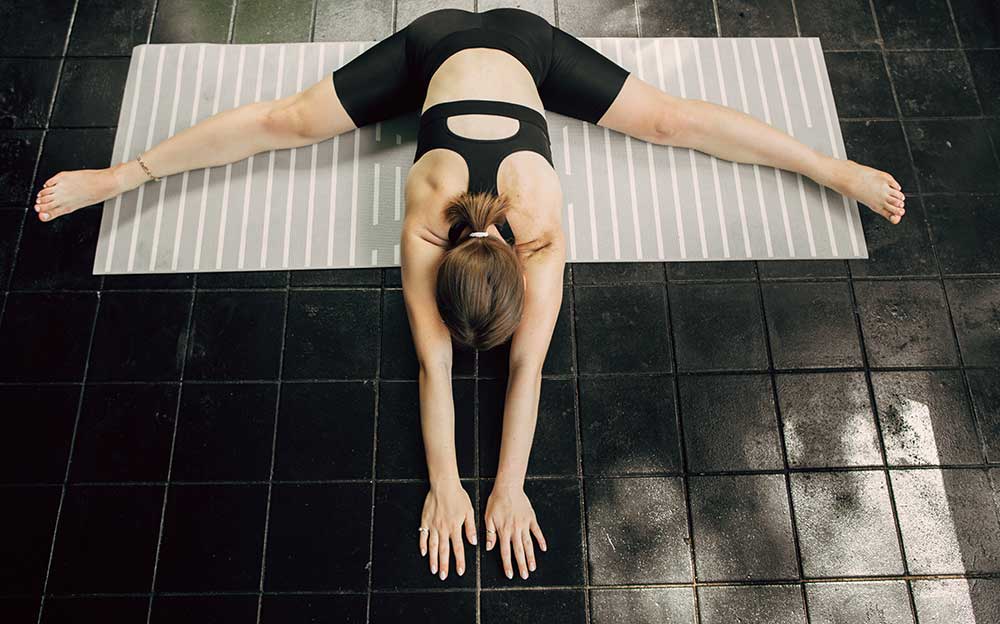
This pose strengthens your spine. It also stretches your back body, hips, inner thighs, and groin.
Sit on a mat and straddle your legs to a comfortable distance, flex your feet. Inhale your arms by your ears and on an exhale, start to hinge forward at the hips.
Keep your spine straight as you walk your hands forward.
To get deeper into this pose, press your hands, one in front and one behind, into the ground. Lift your hips and place them forward an inch or so.
Be mindful of your body and its limits. Use care when opening your hips and stretching the inner thighs.
Hold for 10 breaths.
Upavistha Konasana can stimulate the abdominal organs and calm the brain.
Supta Padangusthasana – Reclined Hand-to-Big-Toe Pose
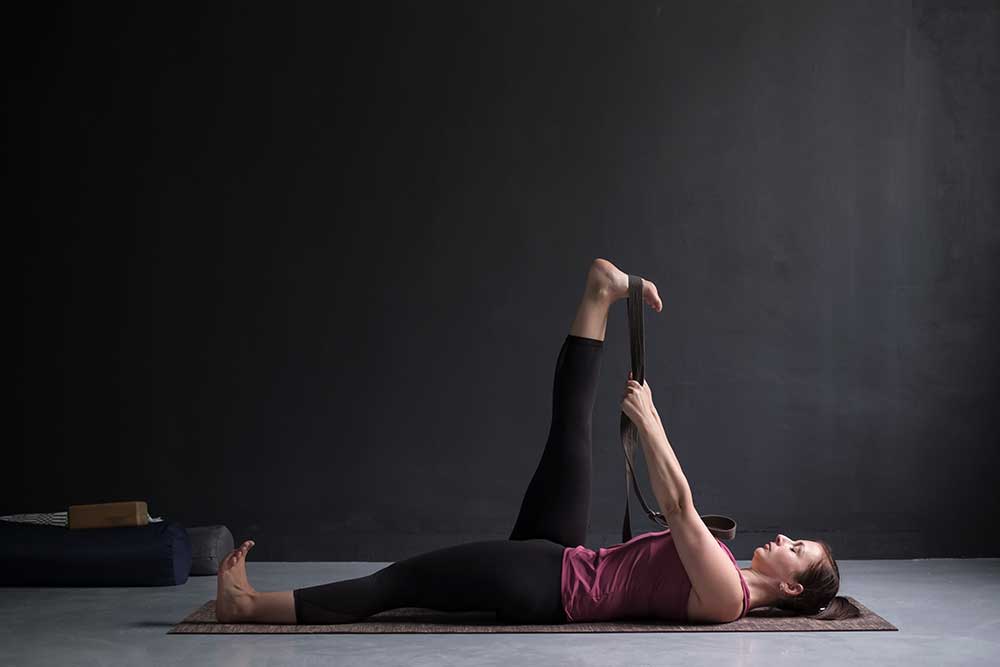
This pose strengthens your knees. It also stretches your quadriceps, calves, hamstrings, and hip flexors.
Start in Apanasana, knees to chest pose. Lie on your back and pull your knees into your chest.
Release your left foot down to the mat as you straighten your right leg, foot to the sky.
Start to walk your hands up your leg. Pull your foot towards the front of the mat stretching through your hamstrings.
If comfortable, you can straighten your left leg along the mat.
To get deeper, loop a yoga strap around the arch of your foot. Walk your hands up the length of the strap or take small pulses.
Hold for 10 breaths. Release back to Apanasana and repeat on the left side.
Other benefits are that the pose improves digestion. It can relieve sciatica and backaches.
Trikonasana – Triangle Pose
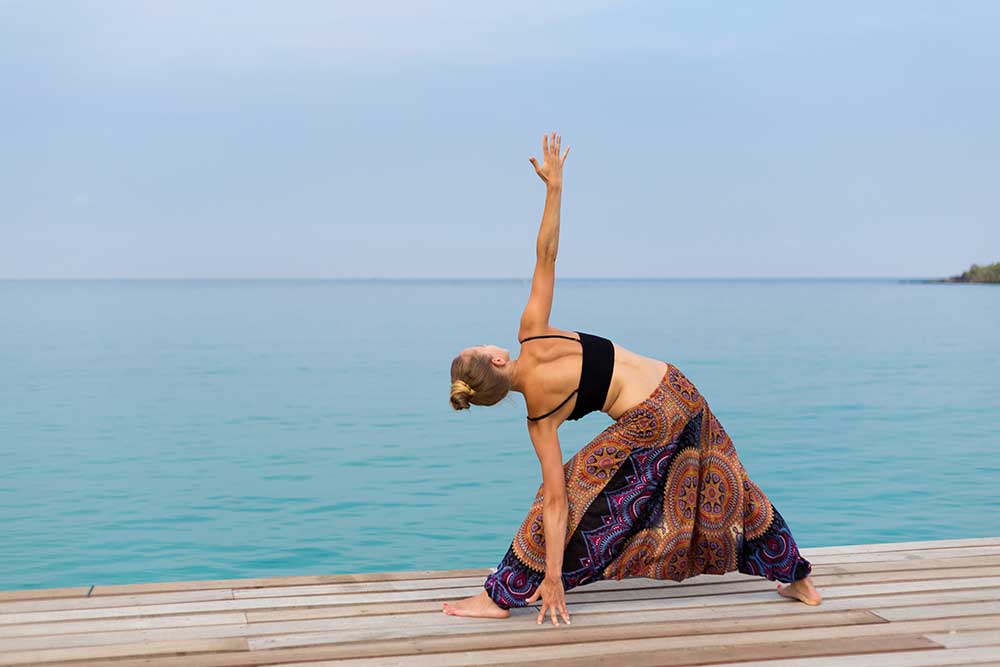
Triangle pose strengthens the inner thighs, knees, and ankles. It stretches the spinal column, legs, and shoulder.
Start in a low lunge with your right leg forward, 90-degree bend in your knee. Your right toes are facing forward. Drop your left heel so it’s parallel with the back edge of the mat.
On an inhale, raise your torso, bringing your arms parallel with the floor. This is your Warrior 2 pose. Exhale, straightening your right leg. Shift your hips to the back of the mat while simultaneously reaching forward.
Rotate your left side body as you drop your right hand down to a yoga block, your right shin, or the mat. Have a straight line from the tips of your left hand to your right.
Hold for 10 breaths. Release to a standing forward fold and repeat on the left side.
Trikonasana can relieve stress, backaches, and improve digestion.
Setu Bandhasana – Supported Bridge Pose
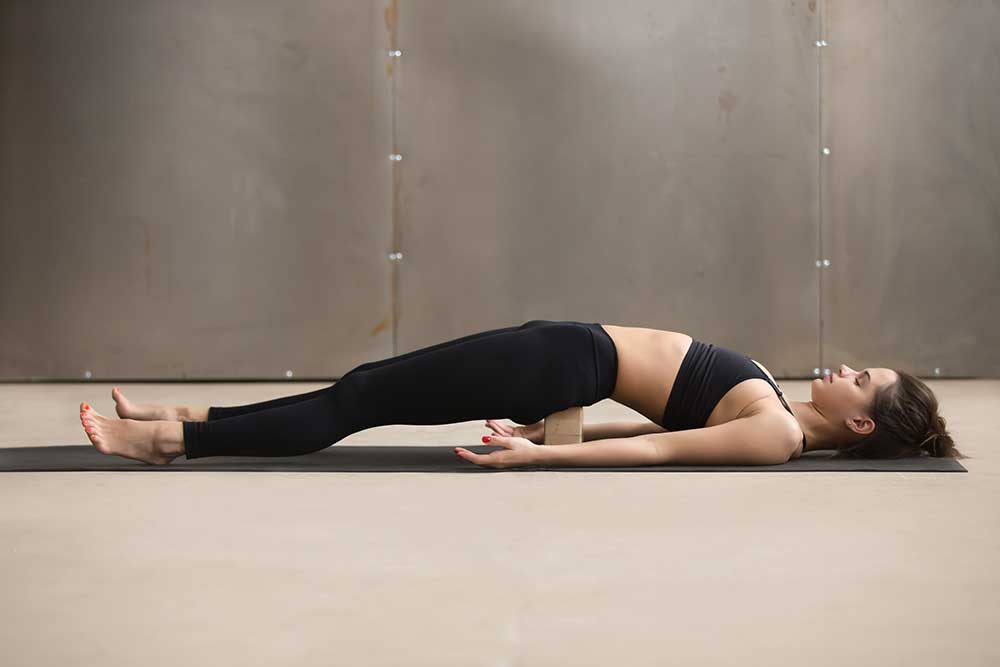
Supported Bridge Pose strengthens your back, hamstrings, and glutes. It stretches your front body, neck, and spinal column.
Lie on your back in Apanasana. Release your feet to the mat, hip-width distance apart.
Walk to your feet closer to your pelvis, ideally until your fingertips can graze your heels. Place a yoga block between your ankles or inner thighs.
Keep your legs engaged against the block. Press through your feet, engage your core and glutes as you lift your hips.
Hold for 10 breaths.
With control, slowly lower your spine back to the mat vertebrae by vertebrae.
Bridge pose can calm the brain, reduce insomnia, and rejuvenate tired legs.
Utkatasana – Supported Chair Pose
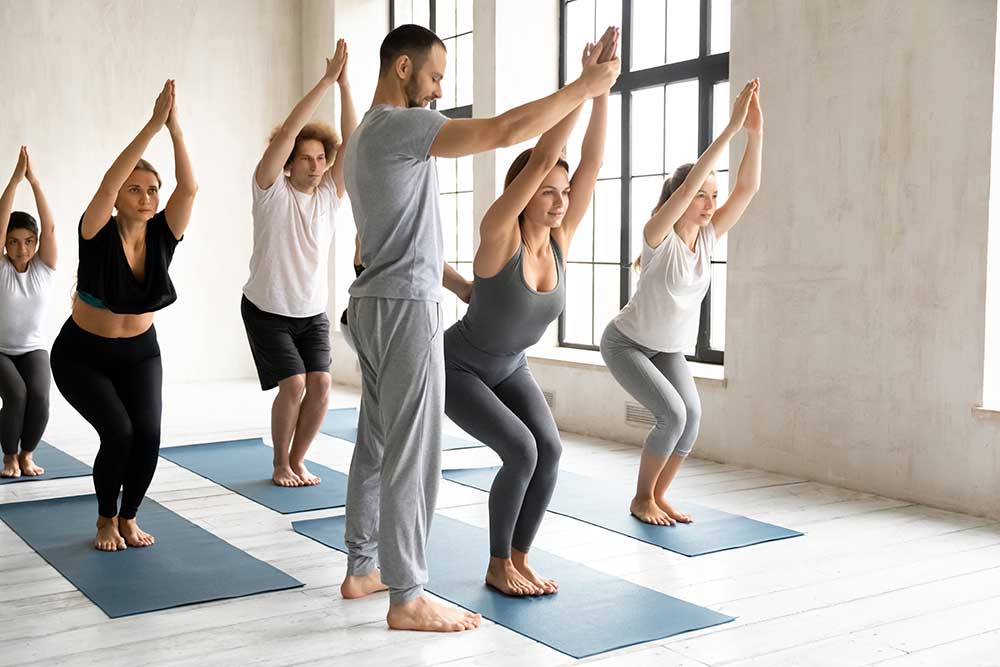
Chair pose strengthens the muscles of your legs and abductors. It stretches your chest and shoulders.
Find an empty wall. Stand with your feet hip-width distance apart with your back facing the wall. Place a yoga block between your inner thighs.
Lean against the wall and slide down until your knees are stacked above your ankles.
You can keep your hands on top of your quads or forward in the traditional chair pose.
Hold for 10 breaths.
Utkatasana can stimulate your abdominal organs, heart, and diaphragm.
Ardha Chandrasana – Supported Half Moon Pose
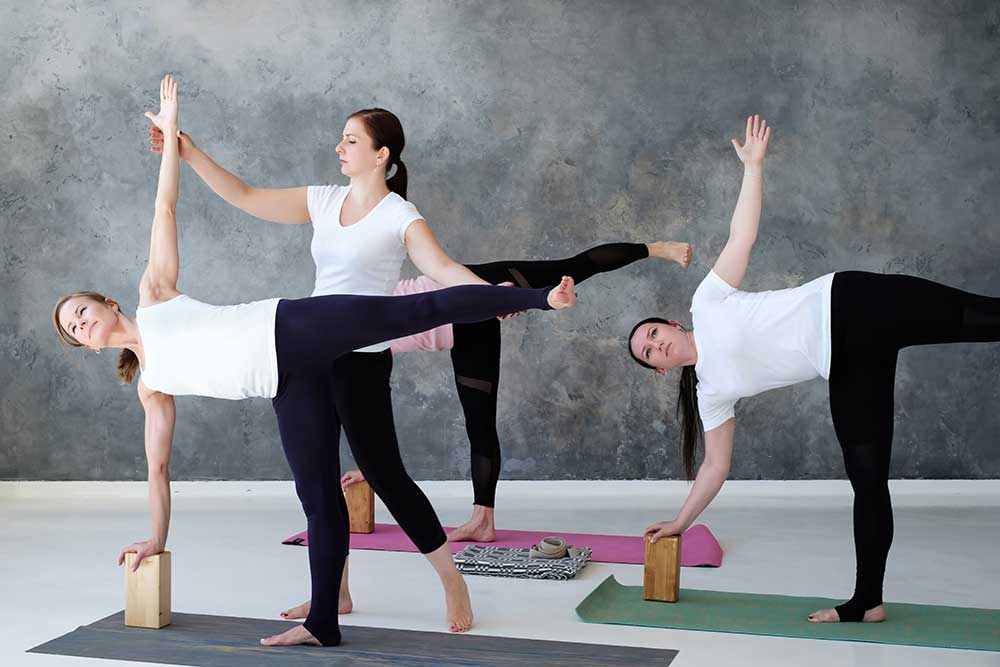
Half moon pose strengthens and stretches the hamstrings without stress on the knees. It also stretches your calves, shoulders, and chest.
Standing with your back against an empty wall, rotate your right foot so the outer edge is flush with the wall. While holding a yoga block in your right hand, bend your right knee as you shift your weight into your right foot.
Hinge forward bringing your right side parallel with the ground. Place the yoga block on the ground directly under your right shoulder.
Make sure your hips are stacked as your left leg raises, parallel with the ground. Your left arm raises making a straight arm from fingertip to block.
Hold for 10 breaths.
Release and repeat on the left side.
Ardha Chandrasana improves coordination and sense of balance.
Stretch and Foam Roll
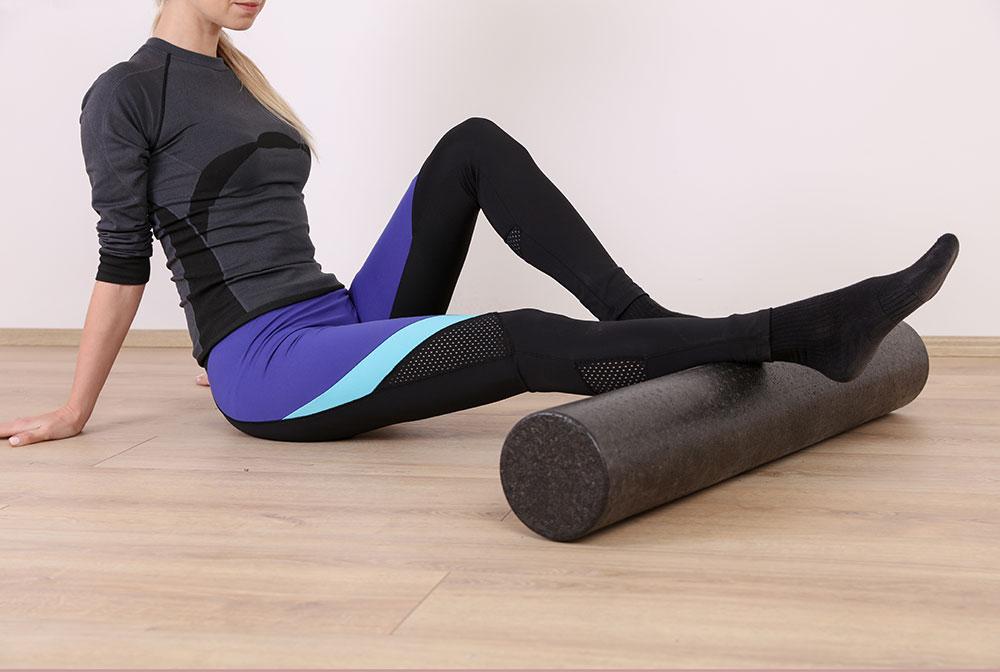
With knee pain affecting so many people, know the symptoms and anatomy. This is super helpful in guiding your health and movement.
To recap, common symptoms are swelling, weakness, and popping sounds.
The bones of the knee are the femur, tibia, fibula, and patella. The main muscle groups are the quads and hamstrings. All these pieces work together for your mobility.
Take your time and enjoy foam rolling as well as practice these ten yoga poses to relieve knee pain!
What's Your Reaction?
Hannah is a former email marketing manager and long-time yoga practitioner with an affinity for creative writing. She uses a combination of soothing language, compelling information, and relevant advice to appeal to readers and provide a sense of warm understanding.






